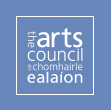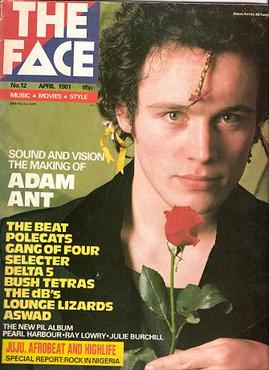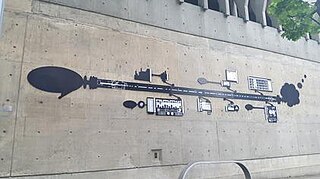In film and television, the production designer is the individual responsible for the overall aesthetic of the story. The production design gives the viewers a sense of the time period, the plot location, and character actions and feelings. Working directly with the director, cinematographer, and producer, production designers have a key creative role in the creation of motion pictures and television. The term production designer was coined by William Cameron Menzies while he was working on the film Gone with the Wind. Production designers are commonly confused with art directors as the roles have similar responsibilities. Production designers decide the visual concept and deal with the many and varied logistics of filmmaking including, schedules, budgets, and staffing. Art directors manage the process of making the visuals, which is done by concept artists, graphic designers, set designers, costume designers, lighting designers, etc. The production designer and the art director lead a team of individuals to assist with the visual component of the film. Depending on the size of the production the rest of the team can include set decorators, buyers, dressers, runners, graphic designers, drafts people, props makers, and set builders.

Arena is a British television documentary series, made and broadcast by the BBC since 1 October 1975. Voted by TV executives in Broadcast magazine as one of the top 50 most influential programmes of all time, it has produced over six hundred episodes directed by, among others, Frederick Baker, Jana Boková, Jonathan Demme, Nigel Finch, Mary Harron, Vikram Jayanti, Vivian Kubrick, Paul Lee, Adam Low, Bernard MacMahon, James Marsh, Leslie Megahey, Volker Schlondorff, Martin Scorsese, Julien Temple, Anthony Wall, Leslie Woodhead, and Alan Yentob.

Visual anthropology is a subfield of social anthropology that is concerned, in part, with the study and production of ethnographic photography, film and, since the mid-1990s, new media. More recently it has been used by historians of science and visual culture. Although sometimes wrongly conflated with ethnographic film, visual anthropology encompasses much more, including the anthropological study of all visual representations such as dance and other kinds of performance, museums and archiving, all visual arts, and the production and reception of mass media. Histories and analyses of representations from many cultures are part of visual anthropology: research topics include sandpaintings, tattoos, sculptures and reliefs, cave paintings, scrimshaw, jewelry, hieroglyphics, paintings and photographs. Also within the province of the subfield are studies of human vision, properties of media, the relationship of visual form and function, and applied, collaborative uses of visual representations.

The Arts Council is the independent "Irish government agency for developing the arts."
Visual culture is the aspect of culture expressed in visual images. Many academic fields study this subject, including cultural studies, art history, critical theory, philosophy, media studies, Deaf Studies, and anthropology.

The Ministry of Culture is the ministry of the Government of France in charge of national museums and the monuments historiques. Its goal is to maintain the French identity through the promotion and protection of the arts on national soil and abroad. Its budget is mainly dedicated to the management of the Archives Nationales and the regional Maisons de la culture.

The Face is a British music, fashion, and culture monthly magazine originally published from 1980 to 2004, and relaunched in 2019.
Classical Antiquity is a biannual peer-reviewed academic journal that covers all topics pertaining to the field of classics, including Greek and Roman literature, history, archaeology, art, philosophy and philology, from the Bronze Age through Late Antiquity. It is published by the University of California Press on behalf of the Department of Classics, since 2020 the Department of Ancient Greek and Roman Studies (DAGRS) by faculty vote, of the University of California, Berkeley.
The following outline is provided as an overview of and topical guide to anthropology:
Screen is an academic journal of film and television studies based at the University of Glasgow and published by Oxford University Press. The editors-in-chief are Tim Bergfelder, Alison Butler, Dimitris Eleftheriotis, Karen Lury, Alastair Phillips, Jackie Stacey, and Sarah Street.

The Journal of Visual Culture is a triannual peer-reviewed academic journal that covers the field of visual arts. The editor-in-chief is Marquard Smith. It was established in 2002 and is published by SAGE Publications.

German Politics and Society (GP&S) is a peer-reviewed academic journal published by Berghahn edited by Jeffrey J. Anderson. It explores issues in contemporary Germany from the conjointed perspectives of the social sciences, history, and cultural studies, and provides a forum for critical analysis and debate about politics, history, film, literature, visual arts, and popular culture. Every issue presents contributions by scholars commenting on recent books about Germany.

French Cultural Studies is a peer-reviewed academic journal that publishes papers in the field of Cultural Studies. The journal's editor is Nicholas Hewitt. It has been in publication since 1990 and is currently published by SAGE Publications.
The Journal of the Royal Anthropological Institute (JRAI) is the principal journal of the oldest anthropological organization in the world, the Royal Anthropological Institute of Great Britain and Ireland. Articles, at the forefront of the discipline, range across the full spectrum of anthropology, embracing all fields and areas of inquiry – from sociocultural, biological, and archaeological, to medical, material and visual. The JRAI is also acclaimed for its extensive book review section, and it publishes a bibliography of books received.
The Dictionary of Art Historians (DAH) is an online encyclopedia of topics relating to art historians, art critics and their dictionaries. The mission of the project is to provide free, reliable, English-language information on published art historians.

Christopher Pinney is an anthropologist and art historian, and Professor of Anthropology and Visual Culture at University College London in the department of anthropology. He is known for his studies on the visual culture of South Asia, specifically India. He was honoured by the Government of India, in 2013, by bestowing on him the Padma Shri, the fourth highest civilian award, for his contributions to the field of literature.

Conduit is an outdoor 2009–2010 mural by Emily Ginsburg, installed on the University Services Building's exterior on the Portland State University campus in Portland, Oregon, in the United States.
Nuncius: Journal of the Material and Visual History of Science is a triannual peer-reviewed academic journal covering the history of science, especially the "historical role of material and visual culture in science". The journal was established in 1976 by Maria Luisa Righini Bonelli as the Annali dell'Istituto e Museo di storia della scienza di Firenze. The journal changed its publisher in 2011. It is published by Brill Publishers and the editor-in-chief is Elena Canadelli of the University of Padua, Italy.








